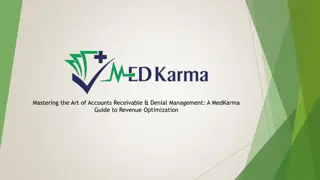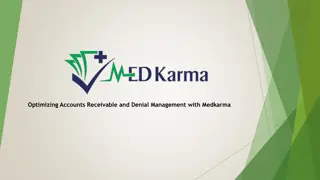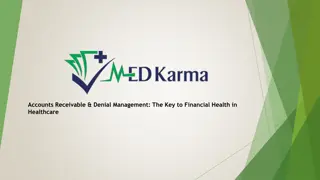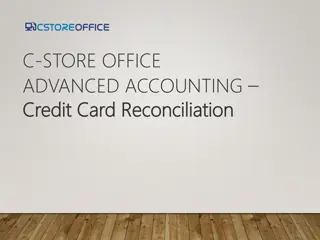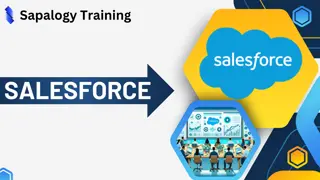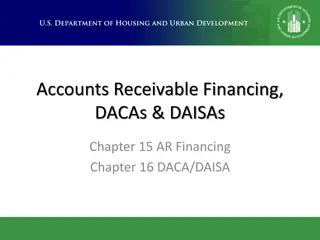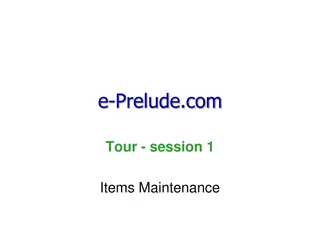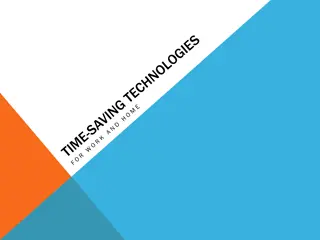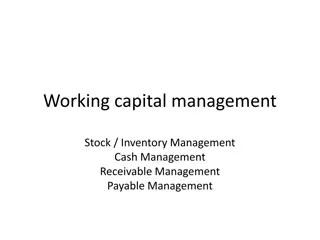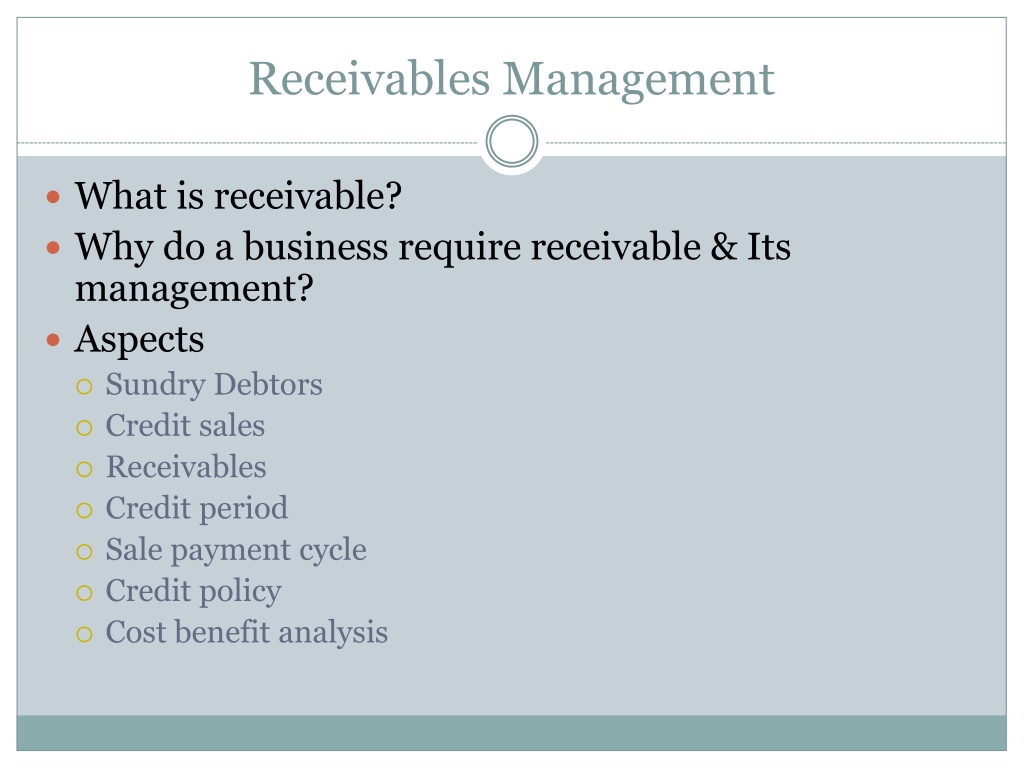
Understanding Receivables Management for Business Success
Learn about receivables, why businesses need them, aspects of sundry debtors, credit sales, credit periods, and more in effective receivables management for optimal financial performance.
Download Presentation

Please find below an Image/Link to download the presentation.
The content on the website is provided AS IS for your information and personal use only. It may not be sold, licensed, or shared on other websites without obtaining consent from the author. Download presentation by click this link. If you encounter any issues during the download, it is possible that the publisher has removed the file from their server.
E N D
Presentation Transcript
Receivables Management What is receivable? Why do a business require receivable & Its management? Aspects Sundry Debtors Credit sales Receivables Credit period Sale payment cycle Credit policy Cost benefit analysis
Objectives of receivable management Creating, presenting and collecting account receivables In order to establish and communicate credit policy For evaluation of customers and credit limits In order to ensure prompt and accurate billing To maintain up to date record of account receivables To initiate collection procedure
Credit policy / Collection policy Credit terms & Conditions Credit limit Customer qualification criteria Collection procedure Customer Delinquency
Credit Analysis Character ( Good Citizen) Capacity ( Cash Flow) Capital ( Wealth) Collateral (Security) Conditions ( economic conditions)
Del credre Agents Del Crede Agent What he does? Importance
Evaluation of credit policies : only variable costs Particulars Present Po Option 1 Option 2 Sales Less: Variable costs Contribution Benefits (A) Average Investments in Receivables ( Based on Sales since Fixed cost is not given) Cost of extending credit: 1) % Opportunity cost ( calculated on Average investment in receivables) 2) Bad debts( % on sales) 3) Credit collection and admn cost Total Cost extending credit(B) Net Benefits Incremental Benefits
In order to increase sales from the normal level of Rs. 240000 per annum, the marketing manager submits proposal for liberalising the credit policy as under : Normal sales : Rs. 240000 & Credit period : 30 days P.V. Ratio is 33.33% The company expects pre tax returns of 20% on investment. Evaluate the credit policies Proposed increase in credit period beyond normal 30 days 15 days Relevant increase over normal sales Rs. 12000 30 Days 45 days 60 days Rs. 18000 Rs. 21000 Rs. 24000








